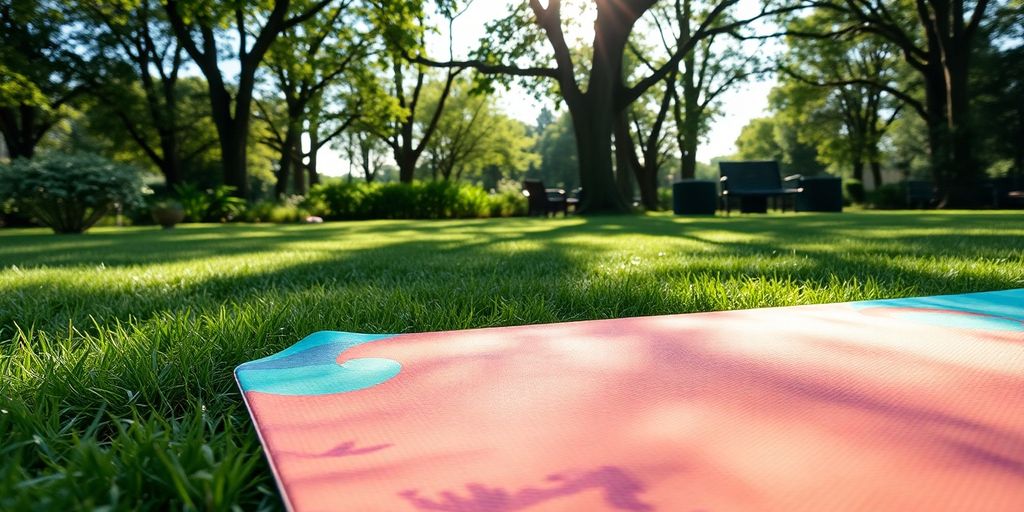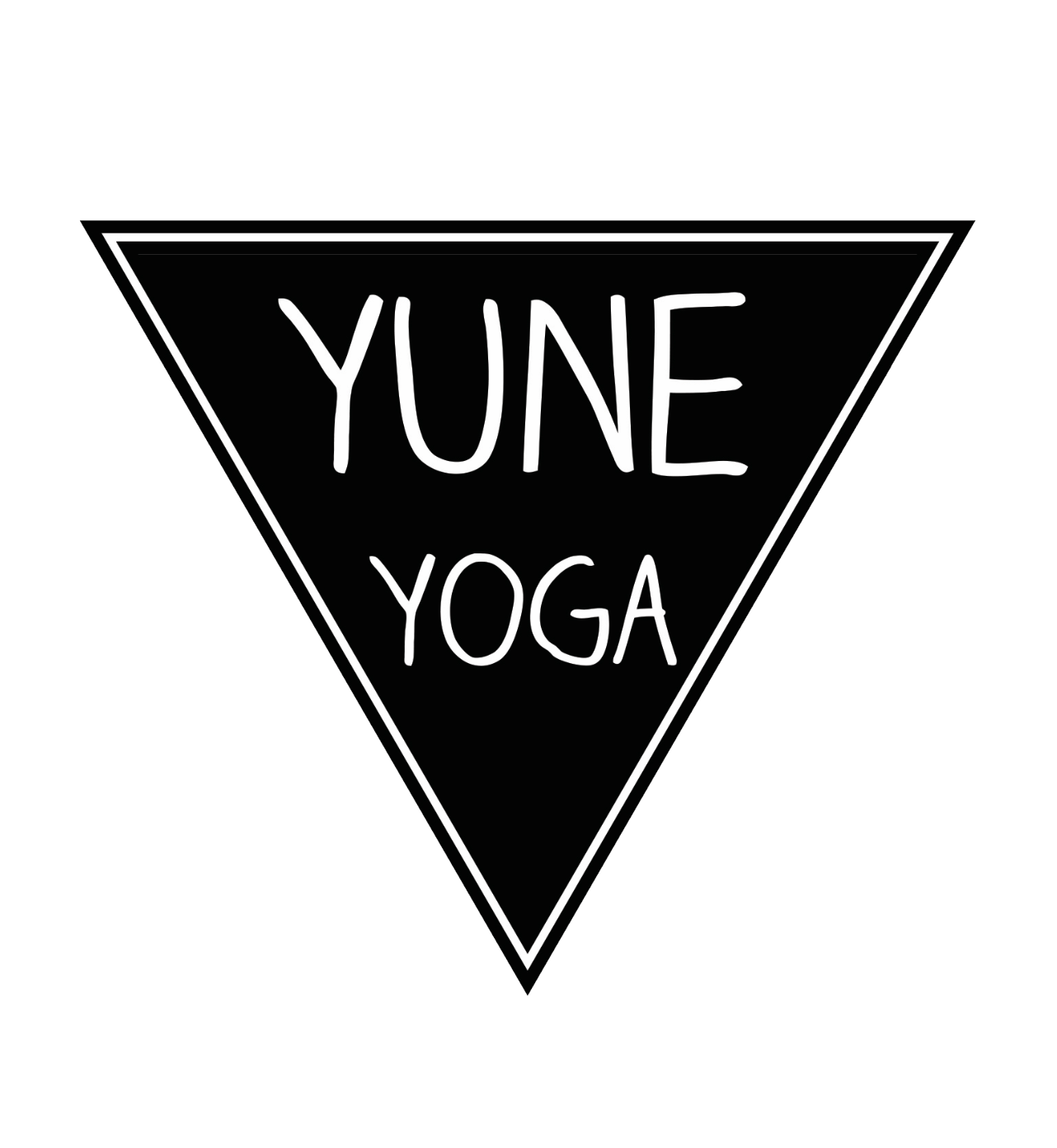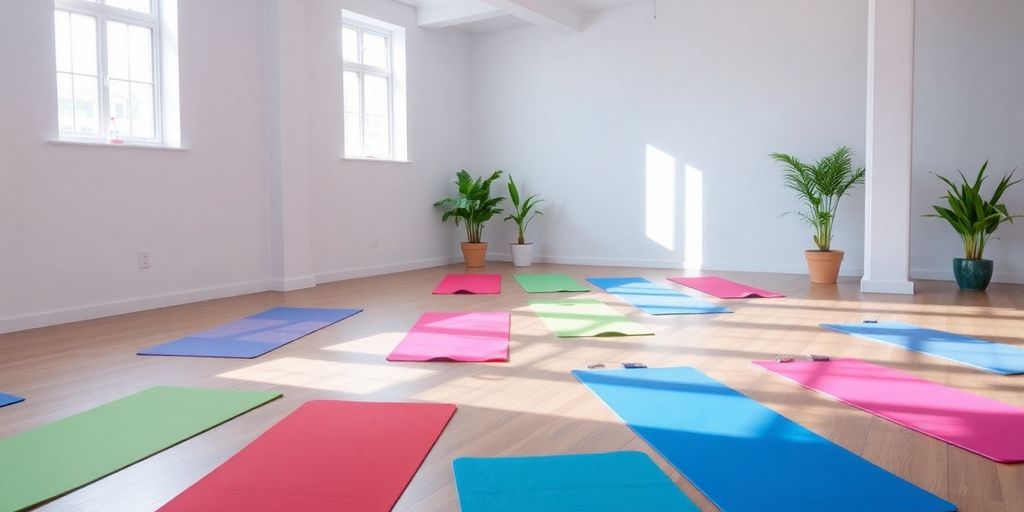
The Ultimate Guide to Choosing the Perfect Yoga Fitness Mat for Your Practice
Picking the right yoga fitness mat can really make a difference in how you enjoy and benefit from your yoga sessions. Whether you're just starting out or have been practicing for years, a good mat offers the comfort, support, and grip you need. This guide will walk you through the main things to think about when buying a yoga fitness mat, so you can find one that fits your style and needs perfectly.
Key Takeaways
- Make sure your mat is big enough for you to move around comfortably.
- Choose mats made from strong and eco-friendly materials.
- Consider the mat's thickness for the right balance of cushioning and support.
- Look for a mat with good grip to avoid slipping during poses.
- Check out different brands to find a mat that fits your budget.
Understanding the Importance of a Yoga Fitness Mat

Benefits of Using a Yoga Fitness Mat
Having a dedicated yoga mat is more than just about claiming your space in a crowded studio. It’s about creating a safe, comfortable environment where you can focus solely on your practice. A good mat provides necessary cushioning, protecting your joints from hard surfaces, and helps prevent slips with its non-slip surface. This is especially vital when you're holding challenging poses or transitioning between them. A mat is not just a piece of equipment; it's your personal space that travels with you, whether you're practicing at home or in a class.
How a Mat Enhances Your Practice
The right yoga mat can significantly enhance your practice by offering stability and comfort. With a reliable mat, you can concentrate on your poses without worrying about slipping or discomfort. The mat's grip is crucial, especially during more dynamic practices like Vinyasa or Ashtanga, where maintaining balance is key. Furthermore, using a yoga mat can help you mentally prepare for your practice, signaling to your mind and body that it’s time to focus and relax.
The Role of Comfort and Support
Comfort and support are the cornerstones of a good yoga mat. The cushioning it provides is essential for joint protection, reducing the risk of injury during longer sessions. A well-cushioned mat, like the Obelisk Yoga Mat, can make a world of difference, especially for those with sensitive joints or those who practice on hard floors. Moreover, having your own mat ensures a clean surface, free from the germs and sweat often found on shared mats. It’s not just about physical comfort; it’s about creating a mental space where you can connect with your body and mind without distractions.
Investing in a quality yoga mat is investing in your practice. It’s about creating a space that supports you physically and mentally, enhancing your overall yoga experience.
Choosing the Right Material for Your Yoga Fitness Mat
Natural Rubber vs. Synthetic Materials
When you're picking a yoga mat, the material is a big deal. Natural rubber is a common choice because it offers excellent grip and cushioning, making it a favorite among yogis. But, if you have a latex allergy, you might want to steer clear. On the other hand, synthetic materials like PVC and TPE are popular too. PVC mats are known for their durability and stickiness, but they aren’t the most eco-friendly option. TPE mats are a bit more environmentally friendly and still provide good grip and comfort. The choice between natural and synthetic often comes down to personal preference and any specific needs, like allergies.
Eco-Friendly Options
If being kind to the planet is important to you, there are plenty of eco-friendly yoga mats to consider. Mats made from jute, organic cotton, or recycled materials are great for reducing your carbon footprint. These mats often come with the bonus of being biodegradable, which is a win for the environment. Plus, they usually don’t have the chemical smell that some synthetic mats have when you first unroll them. Going green with your mat choice not only helps the Earth but can also make your practice feel more connected to nature.
Material Impact on Performance
The material of your yoga mat can seriously affect how you perform during your sessions. Mats with a good grip prevent slipping, which is crucial for maintaining poses, especially in a sweaty session. Natural rubber and some synthetic options like TPE provide excellent grip and stability. However, mats made from materials like cotton might not offer the same level of stickiness, which can be a downside for more dynamic practices. Consider what kind of yoga you practice most often when choosing your mat material. For example, a mat with a strong grip is vital for non-slip yoga sessions, ensuring safety and stability.
Finding the Perfect Thickness for Your Yoga Fitness Mat
Thickness and Comfort Level
Choosing the right thickness for your yoga mat is like finding the sweet spot between comfort and stability. Mats generally come in three thickness categories:
- Light Mats (1/16 inch or less): These are your go-to for travel. They’re super light and easy to carry around, but don’t expect much cushioning. Ideal for those who prioritize portability over comfort.
- Standard Mats (1/8 inch): These mats offer a balance of comfort and stability, making them perfect for most yoga practices. They provide enough padding for your joints while still allowing you to feel grounded.
- Thick Mats (1/4 inch or more): If you have sensitive joints or plan to do more floor work, these mats provide that extra cushioning you need. But remember, the thicker the mat, the heavier it gets.
Best Thickness for Different Practices
Different yoga practices might call for different mat thicknesses:
- Vinyasa or Flow Yoga: A standard mat (1/8 inch) is usually best as it allows for ease of movement while providing adequate support.
- Restorative or Yin Yoga: Opt for a thicker mat (1/4 inch or more) to enjoy the extra cushioning during prolonged poses.
- Hot Yoga: A thinner mat can be advantageous as it helps maintain stability even when things get sweaty.
Impact of Thickness on Stability
The thickness of your mat can significantly affect your balance and stability:
- Thinner Mats: These mats enhance stability and are less likely to bunch up during active poses. They’re great for balance-focused practices.
- Thicker Mats: While they offer more comfort, they can sometimes make balancing poses a bit tricky. They’re better suited for practices where you’re mostly on the floor.
Finding the right thickness is all about balancing comfort with the kind of practice you’re doing. Test out different options to see what feels best for your body and your routine.
For those who need a mat that combines thickness with portability, the Galatea Trekk Travel Mat by Yune Yoga might be the perfect solution. It’s designed to offer ample space and non-slip features, making it ideal for both home and travel use.
Exploring Grip and Non-Slip Features
Importance of Grip in Yoga Mats
When you're holding a pose, the last thing you need is your mat sliding out from under you. Grip is everything. A mat with good grip keeps you stable and focused, especially during those tricky balance poses. The Amazon Basics Yoga Mat, for example, is designed with a non-slip surface that's perfect for hot yoga sessions. This feature not only boosts your confidence but also reduces the risk of injuries.
Textured Surfaces for Better Stability
Textured mats are a game-changer. They provide that extra bit of traction that can make a huge difference in your practice. Here are some common textures you might encounter:
- Smooth Mats: Easy to clean but can get slippery when you're sweating buckets.
- Textured Mats: These come with patterns or natural textures that grip better, ideal for those intense sessions.
- Natural Textures: Materials like jute or rubber offer a built-in grip without needing artificial patterns.
Non-Slip Technologies
Non-slip technology in yoga mats is all about innovation. Some mats feature open-cell technology that absorbs moisture, keeping your feet from sliding. Others have closed-cell designs that repel sweat and make cleaning a breeze. Look for features like these:
- Open-Cell Technology: Absorbs sweat, providing a sticky feel even in hot yoga.
- Closed-Cell Technology: Prevents moisture absorption, making it easy to wipe clean.
- Anti-Skid Bottoms: Ensures the mat stays put on any surface.
A reliable yoga mat should feel like an extension of your body, offering support and grip without distraction. It's about finding that sweet spot where comfort meets performance.
Selecting the Ideal Size and Style

Standard vs. Large Mats
When picking out a yoga mat, size is more important than you might think. A standard mat usually measures about 24 inches in width and 68 inches in length. This size works fine for most people, especially if you're doing basic yoga poses. But if you're into more dynamic styles, like Vinyasa, a larger mat might be better. These can be over 30 inches wide and 72 inches long, giving you more room to move around without stepping off your mat.
| Feature | Standard Mat | Large Mat |
|---|---|---|
| Width | 24 inches | 30+ inches |
| Length | 68 inches | 72+ inches |
| Cushioning | Standard | Enhanced |
Designs and Patterns to Inspire
The look of your yoga mat can actually make a difference in how you feel about your practice. Bold colors can energize you, while softer tones might help you relax. Intricate patterns can add a bit of fun and inspiration. Some folks even choose mats with designs that help them focus or that reflect their personal style.
- Bold Colors: Energize your practice space.
- Soft Tones: Create a calming atmosphere.
- Intricate Patterns: Add visual interest and motivation.
Portability and Storage Considerations
If you're someone who takes your mat to classes or likes to practice in different places, portability is key. Consider how easy it is to carry your mat. Lighter mats are easier to transport, and those that roll up neatly are more convenient. Also, think about where you'll store your mat at home. Make sure you have a spot that keeps it clean and doesn't damage it over time.
- Weight: Lighter mats are easier to carry.
- Rollability: Mats that roll up easily are more convenient.
- Storage Space: Ensure you have a place to keep your mat when not in use.
Choosing the right size and style of yoga mat can make your practice more enjoyable and effective. Consider your personal needs and preferences to find a mat that truly suits you.
For more on how choosing the right exercise mat can improve your workout, consider factors like thickness and material to enhance your practice.
Caring for Your Yoga Fitness Mat
Cleaning and Maintenance Tips
Keeping your yoga mat clean is super important to make sure it lasts and stays fresh. Here’s a simple routine:
- Wipe it down with a damp cloth after each session to get rid of sweat and dirt. This helps keep odors at bay.
- For a deeper clean, mix a bit of vinegar with water and give your mat a good soak. Let it dry completely before rolling it up.
- Make it a habit to deep clean your mat about once a month, depending on how often you use it.
Regular cleaning not only makes your mat last longer but also provides a cleaner surface for your practice, enhancing your overall experience.
When to Replace Your Mat
Yoga mats don’t last forever. Here’s when you might need a new one:
- Visible wear and tear: Check for thinning spots or frayed edges.
- Loss of grip or cushioning: If you’re slipping or feeling the floor too much, it’s time.
- Every 1-2 years: Even with good care, replacing your mat every couple of years is a good rule of thumb for cleanliness and performance.
Storing Your Mat Properly
How you store your mat can affect its lifespan:
- Roll, don’t fold: This prevents creases and keeps it in good shape.
- Cool, dry place: Avoid direct sunlight or hot cars, which can warp or damage the material.
- If you’ve got a gym bag with a mat holder, use it to keep your mat safe and easy to carry.
A well-maintained mat can last for years, making your practice more enjoyable and safe. Remember, mats that are easy to clean tend to last longer, so choose wisely.
Wrapping It Up: Finding Your Yoga Mat Match
So there you have it, folks. Picking out a yoga mat isn't just about grabbing the first one you see on the shelf. It's about finding that sweet spot where comfort, grip, and style meet. Whether you're a newbie or a seasoned yogi, the right mat can make all the difference in your practice. Take your time, try a few out, and don't be afraid to invest in one that feels just right for you. Remember, it's not just a mat—it's your personal space for growth and relaxation. Happy stretching!
Frequently Asked Questions
Why is using a yoga mat important?
A yoga mat provides a comfortable and stable surface, helping you maintain balance and protect your joints during practice.
What materials are best for a yoga mat?
Yoga mats can be made from natural rubber, synthetic materials, or eco-friendly options. Choose based on your preference for grip, texture, and environmental impact.
How thick should my yoga mat be?
The thickness of your mat depends on your comfort needs. Thicker mats offer more cushioning, while thinner mats provide better stability.
How do I clean my yoga mat?
You can clean your yoga mat by wiping it down with a damp cloth after each use. For a deeper clean, use a mixture of water and vinegar.
How do I know when to replace my yoga mat?
If your mat starts to thin out, lose grip, or show signs of wear like fraying edges, it might be time to get a new one.
What size yoga mat should I choose?
The size of your mat depends on your practice style. Larger mats offer more space for movement, while standard sizes are easier to carry.

